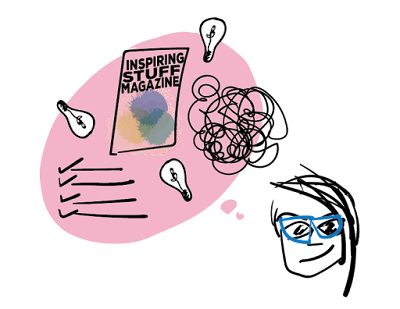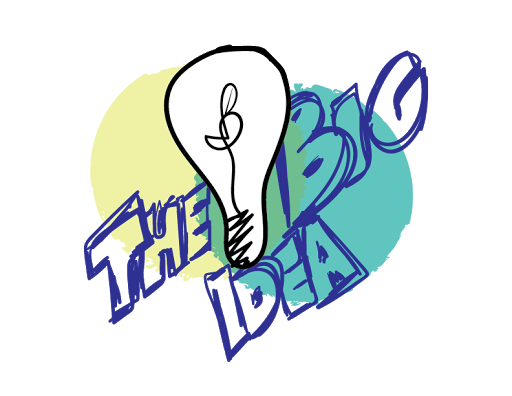Getting to know the client
In the beginning, I gather as much information as I can about the client:- their history,
- their goals,
- their current look and feel,
- and how they’d like to be perceived in the future.
Surf like crazy & get the hunch
Once I have a rough idea of our branding destination, I can start looking for inspiration. This comes in many forms, and often times for me, it is tactile in nature. It could be perusing an old coffee table book of photography, flipping through a design magazine, or something from my own life experience that goes onto the pile of ideas. Sometimes ideas surface from surfing the web for articles and images related to the client’s services. Other times, I’ll have a conversation with a friend about “Wouldn’t it be ridiculous if…” and that leads to an idea! I use this collection of ideas (ridiculous or not) as a springboard to get started.

Initial sketches
Pulling from my messy pile of inspiration, I select a few favorites that align with the client’s values, and lay out my initial ideas. Our team often times begins projects with a logo design. This step is critical for building a brand’s overall look and feel, so we put a lot of thought into how it could be used in a variety of materials – from web use to t-shirts and business cards to huge outdoor boards. For a logo to stand the test of time, it needs to be practical in a plethora of formats. I experiment with a variety of fonts and icons to create a special look and feel for each of my clients.The discussion + revisions
Once I’ve put together a handful of ideas that I’m comfortable with, I often times discuss them with the TBH team (or my business-minded husband), utilizing them as a test audience.- Do the ideas make sense upon first glance?
- Do the concepts feel fully developed?
- Are they practical across many formats?
- Do they fit the client’s vision?
The presentation + feedback
After the ideas have been tweaked and narrowed down to the strongest options, it’s time for client review. I’ve found that communication is key here. Explaining to the client how I got from point A (the old look) to point B (the new look) is really important in creating trust for the creative process. When I do this part of the job well, clients tend to respond positively and appreciate the thought that has gone into the project.While we always hope for a solution from the first presentation (dream!), changes and feedback are inevitable. Constructive feedback from the client is an important part of the creative process, as it eventually leads us to the best possible solution for their needs, and can improve our work!
In a nutshell, for me the creative process starts with a messy collection of ideas and boils down to one big idea. It’s messy in the beginning, but in the end, a solution is found and the client can happily move forward with a brand that leaves a lasting impression.
Interested in learning more about creative processes in digital marketing? Check out these blog articles:
- Color theory & web design: Color basics
- Color theory & web design: Choosing a color scheme for your website
- Five easy steps for using images to communicate information
Need help with design elements for your website?
We would be glad to help! Visuals are a crucial part of your company’s digital strategy, and we can you help you send the right message to your audience.Ready to revamp your website? Start here

